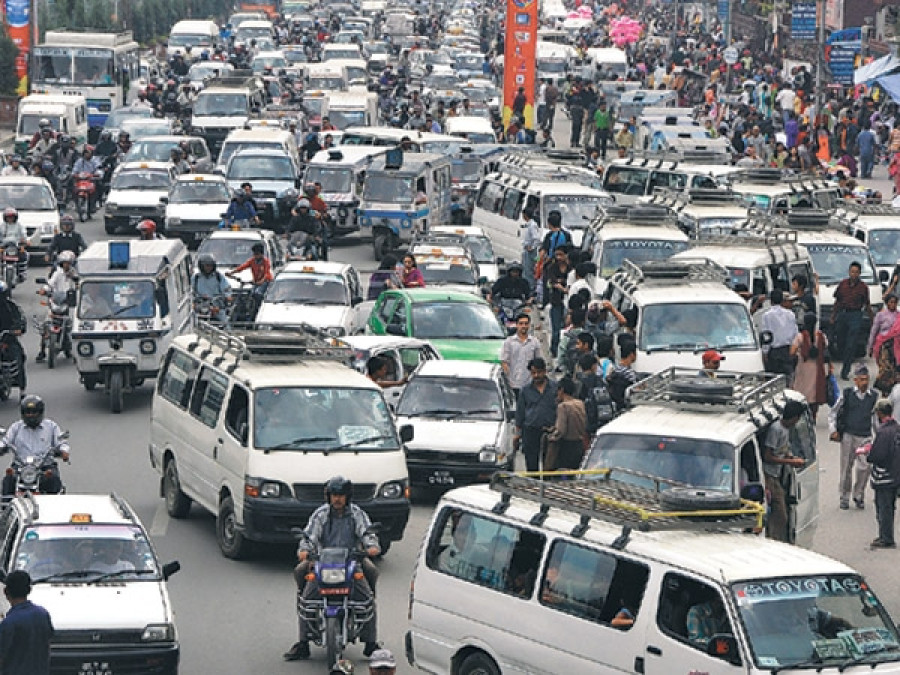Money
Streamlining traffic: 200 public transport routes to be trimmed
The 200 public transportation routes in the Kathmandu Valley will be trimmed to 66 in a bid to streamline traffic and ease congestion, the Department of Transport Management (DoTM) said.
The 200 public transportation routes in the Kathmandu Valley will be trimmed to 66 in a bid to streamline traffic and ease congestion, the Department of Transport Management (DoTM) said.
Starting mid-June, commuters will have fewer routes to choose from; but the move is expected to bring order and eliminate overlapping in the urban transportation network.
The DoTM has categorised public transportation routes in Kathmandu into primary, secondary and tertiary. Routes will be established based on commuter volume and the width and length of the roads. Efforts will be made to serve the maximum number of people, the department said.
Eight routes in Kathmandu, Lalitpur and Bhaktapur and the Ring Road have been identified as top priority. Likewise, 16 routes have been accorded second priority and 42 routes have been described as third priority.
“Currently, we are preparing a working plan to define the new routes,” said DoTM Director General Rup Narayan Bhattarai. The proposed route network will be sent to the Cabinet for its approval after local elections are completed, he added. The government has announced that local elections will be held on May 14, the first in two decades.
According to Bhattarai, the tangle of transportation routes and swelling vehicle numbers have resulted in traffic congestion, increased road accidents and pollution. This is why Kathmandu’s transportation network needs to be redesigned, he said. Swarms of small vehicles like tempos and micro buses running all over have added to the chaos.
Apart from congestion, small vehicles have failed to address the needs of the general public. According to the DoTM, the number of public vehicles in Kathmandu is adequate. The Valley’s population stands at around 4 million, including the floating population. Vehicles like mini buses, micro buses and electric tempos cannot accommodate many passengers but only add to traffic congestion.
In a bid to discourage such small vehicles, the government in the budget statement for 2014-15 has reduced the import duty on vehicles with a capacity of more than 40 seats to 5 percent. Following the move, players from the public and private sectors have introduced large buses.
The government’s move to slash routes and promote large buses hasn’t gone down well among transportation entrepreneurs. They have been urging the government to withdraw the plan saying that the investments made by small vehicle owners would be jeopardized.
However, the DoTM seems to be determined about introducing the new plan at the earliest possible. “Transportation entrepreneurs have been telling us that they won’t accept our plan to reduce vehicle routes. Come what may, we will enforce it,” Bhattarai told the Post, adding that the government wouldn’t bow down to the cartel. “We will use force if needed.”




 5.39°C Kathmandu
5.39°C Kathmandu












%20(1).jpg&w=300&height=200)
